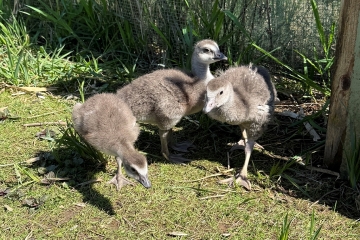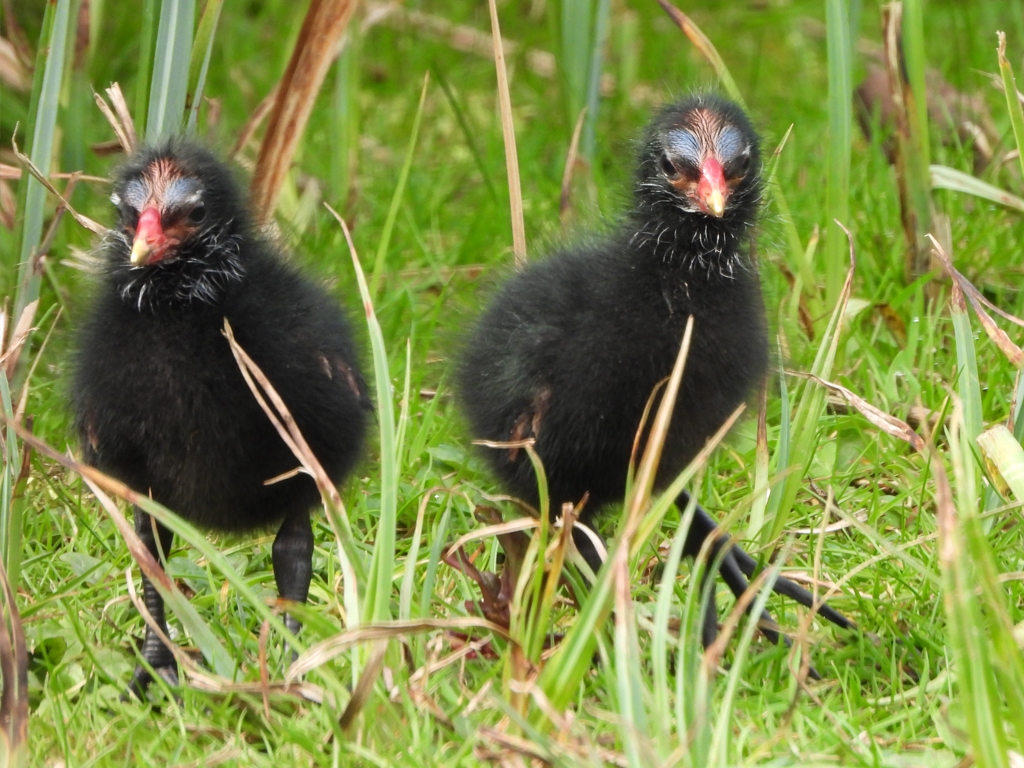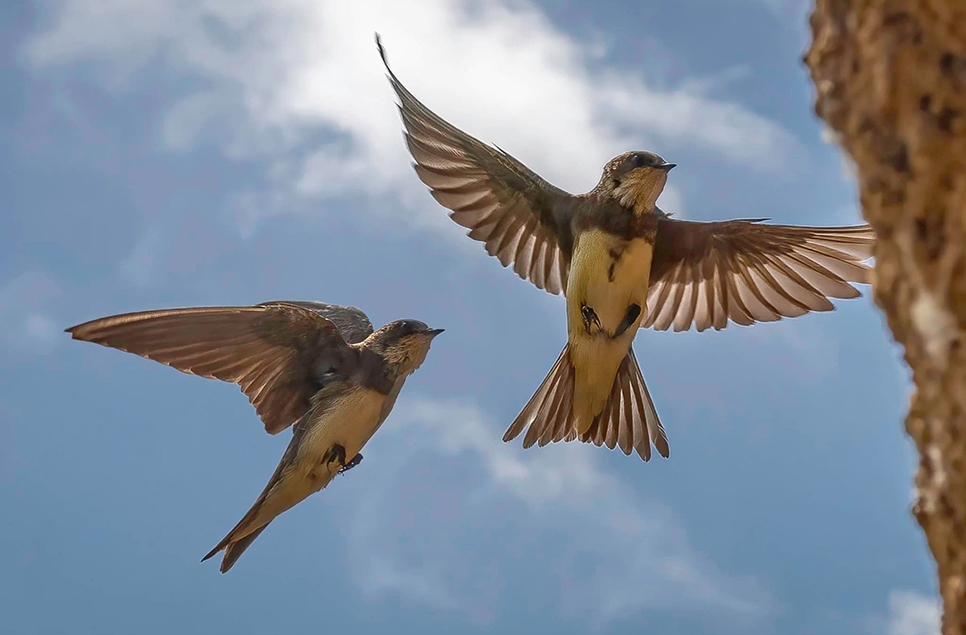Love birds? Its National Nest Box week!
Love birds? National Nest Box week begins on Valentines Day, Sun 14 Feb. Show garden birds some love by putting up a new nest box in any outdoor space you have! If you already have nest boxes it’s time to give them a spring clean.
Attracting birds to your green space is an easy way to connect with nature during lockdown. Get outdoors, close your eyes for just a moment and listen for birdsong. Being attuned to what birds are doing can give meaning and rhythm to our own lives.

Tree creeper chicks in a nestbox at Arundel Wetland Centre
Birdy Behaviours
In February birds begin to pair up and look for nesting spots for the breeding season. Watch for nesting activities like birds carrying twigs, moss or feathers in their beaks. Listen out for male birds singing to establish their territory.
Reserve Warden Suzi Lanaway said: “As natural nesting places disappear birds rely on nest boxes in gardens. With birds searching for nesting sites mid-February it’s a good time to get a nest box up to support nesting birds.”
Wardens at WWT Arundel check all our nest boxes in February, replacing damaged nest boxes, moving unused ones to new spots and giving them a clean. Many boxes are used as roosting spots for birds and hidey holes for small mammals over the winter months.

Checking the nest boxes in the Wood Loop at Arundel Wetland Centre

An old blue tit nest removed from a nest box
New to Nest boxes?
It’s possible to get a beginners box made from pine for under £10 from most online stockist like the WWT online store https://shop.wwt.org.uk/collections/birdcare or you can go high end with a cedar nest box. Cedar timber ages naturally and attractively and gives excellent insulation and strength. Invest in a metal protecting plate to surround the entrance to your nest box. This will stop squirrels and other predators from enlarging the hole to get inside the nest. If you are handy with a hammer it’s easy to build your own nest box with loads of ideas available online.

Pick a nest box with an entry hole that is right the types of birds that are in your area. A 26mm hole is suitable for blue, marsh and coal tits, and possibly wrens but all other species will be excluded by the smaller entrance. A 32mm entry hole is suitable for great, marsh & coal tits, redstart, nuthatch, pied flycatcher, house sparrow and tree sparrows. Robins, blackbirds, pied wagtails, and song thrush and grey wagtails use an open front box. Tuck it behind some greenery if you want to attract a wren.
Not sure who is who? Our family friendly, free garden bird spotter sheet may help, download it here: https://www.wwt.org.uk/uploads/documents/2020-04-22/wwt-spotter-sheet-garden-birds-1.pdf
Use galvanized wire to attach a nest box to a tree, aim for 1-3 metres from the ground. No trees? The side of a shed or wall will do but use screws that won’t rust away.
Not a Nest Box newbie?
If you already have nest boxes now is the time for maintenance. If you are not sure if birds are currently using your nest box it is best to leave it alone. It is illegal to damage the nest of any wild bird while in use or being built. The eggs of all wild birds are also protected.
If the box appears empty, clean it, repair any damage or replace it if it is broken. To enable cleaning, most enclosed nest boxes open easily with a wire or clip that holds the roof or front closed. Empty old nest material out the bird box and clean it with boiling water to kill parasites. When the box is totally dry, close and rehang it.
Are you finding your nest boxes are not being used year to year? Try moving them to a new location. Ensure the nest box slants down to keep out rain and is sheltered from prevailing wind and strong sunlight. Also don’t put up a bird box too close to your bird feeders – all the feeder activity will prevent birds from using it. For this same reason don’t put nest boxes for different species close together.
National Nest Box Week was established by the British Trust for Ornithology and bird care specialists Jacobi Jayne.



